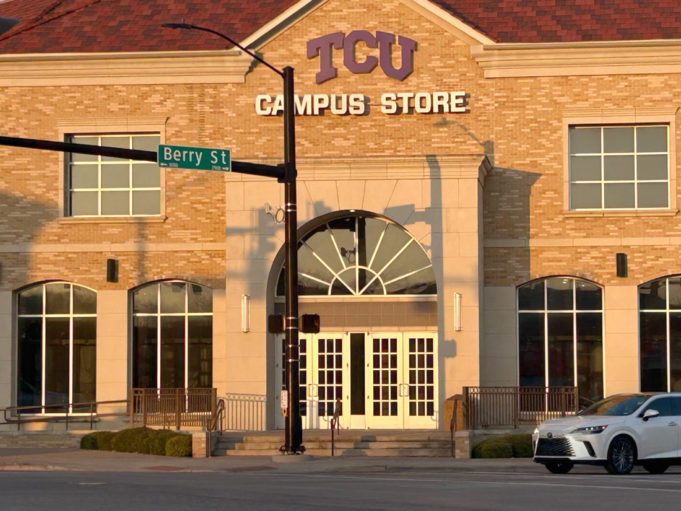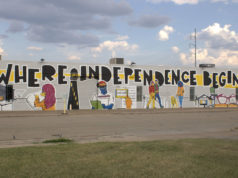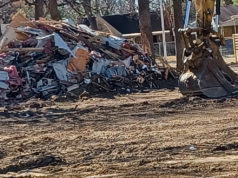When she moved into her home on Sandage Avenue 12 years ago, Tim Latta said she had no idea she would be surrounded by TCU students living in “stealth dorms” — residences developed by private investors where multiple students live but that are not official university housing.
The student presence in her neighborhood may expand as the university builds new student residences and parking on the east side of campus to accommodate growth. This means there will be more official student housing locations, but Latta is not convinced this will help her neighborhood.
“It’s not that I dislike TCU,” Latta said. “I think it’s a wonderful institution, but there are limits, and I think they’ve hit them.”
Last fall, Fort Worth City Council unanimously approved rezoning current parking lots and student housing on Merida Avenue, Sandage Avenue, Pond Drive, West Berry Street, West Lowden Street, and McCart Avenue from community facilities to high-intensity mixed use. Philip Varughese, who represented TCU at a Zoning Commission meeting in October, said building additional housing and a parking garage is in response to the university’s growth. TCU’s master plan includes predictions that undergraduate enrollment will grow to 15,000 by 2034, and graduate enrollment is expected to increase to 2,500 during the next decade. Varughese said construction is planned to start this summer and conclude in two years.
TCU’s goal is to transform the eastern side of the university into “a thriving residential hub for campus life,” according to the master plan. The university already opened two new residence halls, adding almost 300 more beds, and a dining hall this year on the east side of campus. In all, the university aims to bring in 3,000 new beds to its new eastern residential village.
“TCU’s new strategic plan aspires to gradually grow enrollment,” said Todd Waldvogel, associate vice chancellor for Facilities and Campus Planning. “Planned on-campus properties developed by TCU will provide sufficient inventory for all first- and second-year students as well as some inventory for upper-division students. Likewise, planned mixed-use development on Berry Street will provide additional market inventory for upper-division students while enhancing the overall experience for students and the community alike.”
Latta’s main concerns are traffic and parking. Her neighborhood wanted to enact permit parking, but that would require a costly traffic study and funds for signs. She recalled two times that she had to relocate meetings scheduled to be held at her home because of a lack of parking.
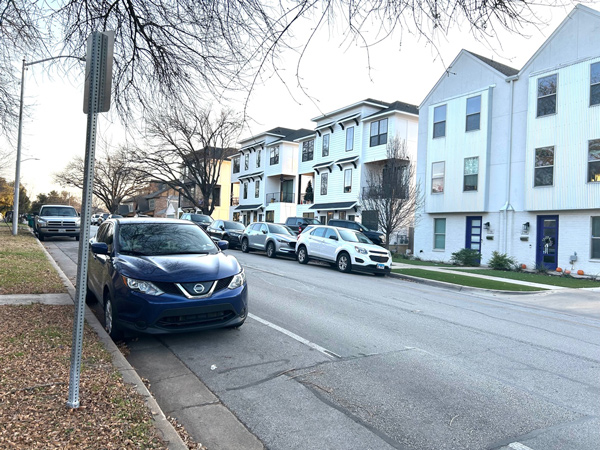
Photo by Madelyn Edwards.
“The traffic on our street is going to be horrendous,” Latta said, adding that her neighbors tried to get the city to install a four-way stop at Sandage and West Cantey Street. “When that dorm is full of people, they’re going to come right down West Cantey and probably turn on Sandage, and this street is not built for that. This street is so pockmarked by holes already.”
Two streets over, on Forest Park Boulevard, father of two Justin Jantz also mentioned a concern about traffic on his street, which had multiple vehicles parked on both sides of the road on a recent Sunday evening. Having lots of parked cars on the street along with drivers speeding down the road is a recipe for wrecks.
Especially at Forest Park and McPherson Avenue, he said, “it’s gotten way more dangerous. The accidents are pretty often, and at least once an hour, you’re hearing someone just absolutely losing their mind, like honking or slamming on their brakes or something. So, definitely when all the students are here, it’s much more congested through here and definitely not as safe for anyone, students in particular.”
But Waldvogel said traffic isn’t expected to increase by much.
“While we plan to introduce new residence halls near Frisco Heights, student residents will park on the west side of campus,” he said. “Likewise, a new parking garage will consolidate the disparate parking and likely simplify traffic patterns, which we’re working to direct away from the neighborhoods.”
Not everyone has traffic concerns. Montana Spencer, who grew up in Fort Worth and rents a home on Sandage with his roommates, thinks the plan for more student housing is good for TCU and the city. His only concern is with being priced out of his neighborhood.
“If our rent is going up, it makes it harder for just average citizens who happen to live close by TCU,” Spencer said.
One of the members of the Zoning Commission remarked during the October meeting that neighbors have wanted expanded TCU housing because it may eliminate the chance of stealth dorms. Students living together next to single-family homeowners is a dynamic that sometimes leads to conflict, especially if the students host rowdy parties with no consideration for their neighbors.
Janet Williamson is very familiar with this issue. She lives in Westcliff and has been dogged by the events held by a handful of fraternities in her neighborhood for about a decade. It isn’t clear how much the new housing and parking will help with the situation in Westcliff, but she said TCU didn’t do enough to prepare for the future.
“TCU didn’t plan for the growth,” Williamson said. “I think it’s a real disservice that TCU did by not understanding if they’re going to keep pulling students in and have this massive growth, you need to have some infrastructure in place for them.”
Perspectives on TCU and stealth dorms differ across the neighborhoods. Genna Banta, who used to live in the Bluebonnet Place neighborhood and still owns rental properties in the area, only had positive things to say about TCU’s expansion plan and her relationships with students.
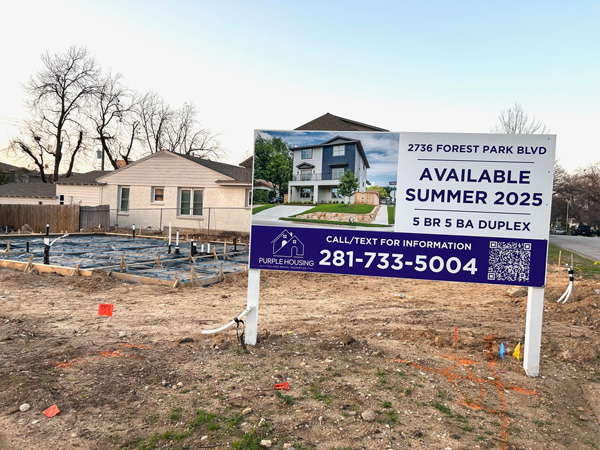
Photo by Madelyn Edwards.
TCU, she said, “seems to be very well run in how they’re managing their student population with their increases in student housing. It’s always worked out really well, and I’m expecting it will continue to work well.”
Martha McDonald Jones, longtime Bluebonnet Hills resident and member of the TCU Neighbor to Neighbor program, agrees that having more dedicated student housing could be a relief for neighborhoods and a boon for the students.
“I talk to a lot of students, and a large part of those students want to live on campus,” Jones said. “They would love to have an apartment adjacent to campus and be a part of the campus. So, I think as TCU does this, it’s going to really help the whole area. It’s going to take the burden off of neighborhoods somewhat because there will be more available living on campus rather than new places off-campus.”
Unburdening neighborhoods is part of what the increased housing is meant to do, Waldvogel said.
Stealth dorms, he said, “demonstrate the high demand for quality student housing near campus.”
Along with additional student housing and parking, the plan for TCU’s east campus is to add spaces for people to gather outdoors, like parks and recreational facilities, which will also connect with the Trinity Trails. With the revitalization of Berry Street with mixed-use developments, Banta said these changes should be very beneficial to the neighborhoods.
“I think it’ll be a win-win for everybody,” she said.
Waldvogel said TCU has communicated with neighbors about the master plan and discussed neighbors’ concerns through previous town hall meetings. Moving forward, more will be discussed with neighbors and other stakeholders once TCU has final approval for construction and schedules, he said.
“TCU values our neighbors — our healthy, contiguous neighborhoods are part of what makes our community desirable,” Waldvogel said. “We value and respect the neighborhood partnerships and their quality of life. Development will bring typical challenges associated with construction, but TCU is committed to minimizing impact on neighbors while we enhance the campus community.”



